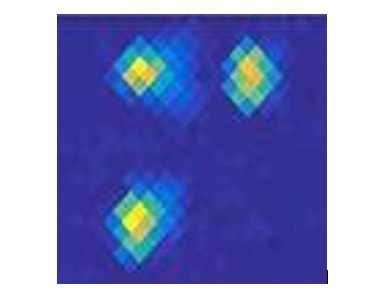December 14, 2016, Cork, Ireland: Researchers led by Nabeel Riza, Chair Professor of Electrical Engineering, School of Engineering, University College Cork, Ireland, have reported a visible-SWIR (short-wave infrared) dual simultaneous band CAOS camera demonstrating an extreme 136 dB dynamic range capability with better than ̶ 60 dB inter-band crosstalk. Current multi-pixel sensor cameras can face difficulty when viewing extreme contrast multispectral bright and weak targets over broad spectral bands.
The demonstrated CAOS camera allows precise and smart spatial as well as spectral capture of the previously invisible multicolour targets by transforming the incident light into mobile phone-type time-frequency encoded signals that undergo light-detection and extreme dynamic range decoding via electronic wireless technology.
The camera has successfully imaged a target scene containing 3 visible (red, green, blue) LEDs and one 1450 nm SWIR LED. Simultaneous imaging of the red, green, blue spectral channels of a white light LED target is also demonstrated. Using a laser-based extreme brightness test target that is subject to nearly 7 decades (107) of gradual optical attenuation, the experimental CAOS camera using precision control 16 bit count Analog-to-Digital (A-D) conversion combined with electronic digital signal processing demonstrates an agile pixel extreme dynamic range of 136 dB, which is a 56 dB improvement over the previous CAOS camera demonstrations.
When used with classic multispectral and hyperspectral imagers, this camera can extract useful spectrum specific irradiance image pixel data required by the end user. In effect, the proposed spectral CAOS camera can be programmed as a precision spatial and spectral irradiance sifter that pulls out otherwise unseen image data. Applications for this dual-band CAOS camera are diverse and include industrial machine vision, food processing, archaeology and art conservation.
The work is described in a paper published in the OSA on-line open access Journal Optics Express, issue dated December 12, 2016. Addition information of the CAOS camera at www.nabeelriza.com.
- N. A. Riza et.al., "Demonstration of 136 dB dynamic range capability for a simultaneous dual optical band CAOS camera," Opt. Express24, 29427-29443 (2016).
https://www.osapublishing.org/oe/fulltext.cfm?uri=oe-24-26-29427&id=356010













